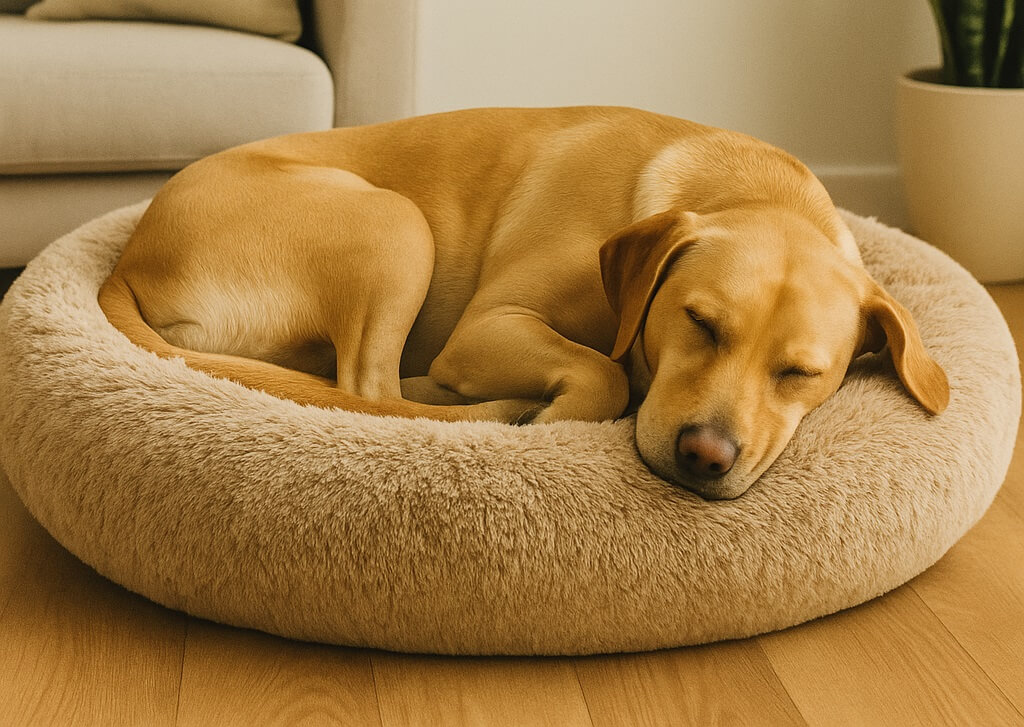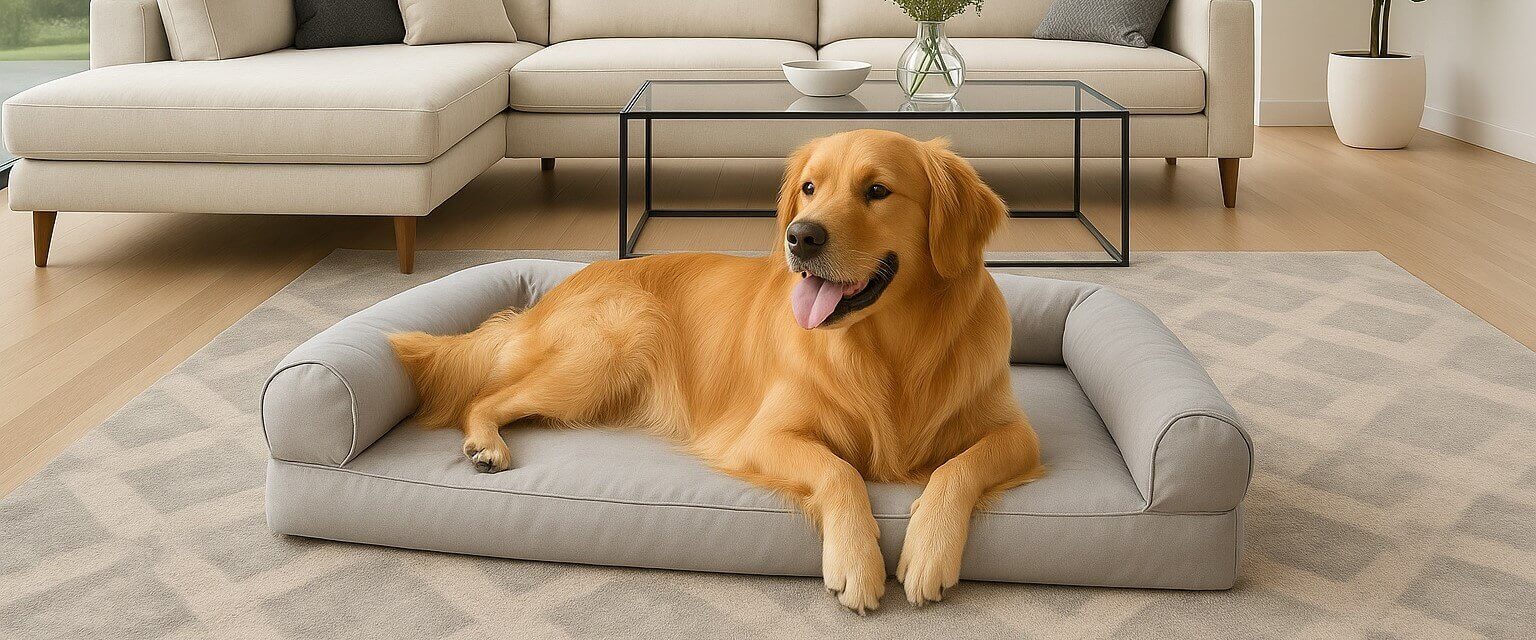How to Choose the Best Dog Bed for Your Pet – FetchyFriends
Choosing the best dog bed for your pet isn’t just about comfort — it’s about giving your furry friend a cozy, safe space they can truly call their own. From anxious pups to senior dogs, the perfect bed can make a big difference in their health, sleep quality, and happiness.

This post may contain affiliate links. If you click and make a purchase, we may earn a small commission — at no extra cost to you. Thanks for your support!
Some product images on this site may be generated or enhanced using AI tools and are intended for illustrative purposes only. Please refer to the official Amazon product page for accurate visuals and details.
Last Updated on May 15, 2025
Finding the best dog bed for your pet is more than just picking something soft and cute — it’s about creating a dedicated spot where your pup feels safe, supported, and completely at ease. With dogs sleeping an average of 12–14 hours a day, the right bed can greatly impact their overall health, joint care, and daily behavior.
From orthopedic memory foam for seniors to calming donut beds for anxious pups, this guide breaks down what to look for based on your dog’s size, age, and sleep style. Let’s help you choose a bed your furry friend will love — and actually use.
Give your pup the comfort they deserve — check out our favorite dog beds that pets (and their humans) love!
🛏️ Discover Top Dog Beds NowKey Factors to Consider When Choosing the Best Dog Bed for Your Pet
1. Your Dog’s Size and Sleeping Style
Pay attention to how your dog naturally sleeps. Do they stretch out like a log, curl up into a ball, or flop onto their side? Dogs that sprawl need flat, spacious beds, while curlers tend to love beds with raised edges for support. A bed that matches their sleep style promotes restful sleep and minimizes discomfort.

2. Age and Health Conditions
Older dogs often suffer from joint pain, arthritis, or limited mobility. Orthopedic beds with high-density memory foam reduce pressure points and help them rest more comfortably. For younger, energetic dogs, beds with chew-resistant covers are a safer bet. If your dog is recovering from surgery, low-profile beds are easier to access.
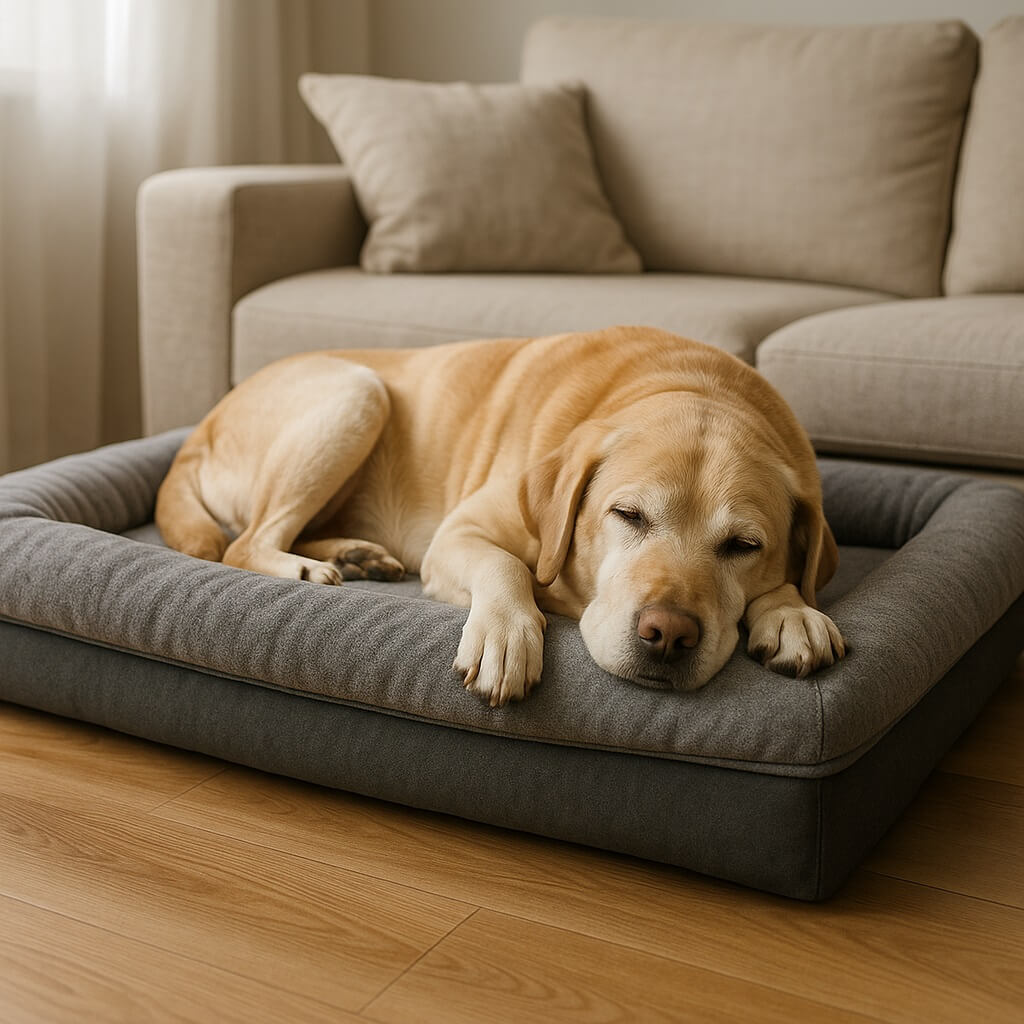
3. Bed Material and Fillings
Not all beds are created equal. Cheap polyester can flatten quickly, while memory foam offers superior comfort and durability. Look for breathable fabrics to reduce overheating. Dogs with sensitive skin may benefit from organic cotton or hypoallergenic materials. Beds with removable covers are ideal for hygiene and easy maintenance.
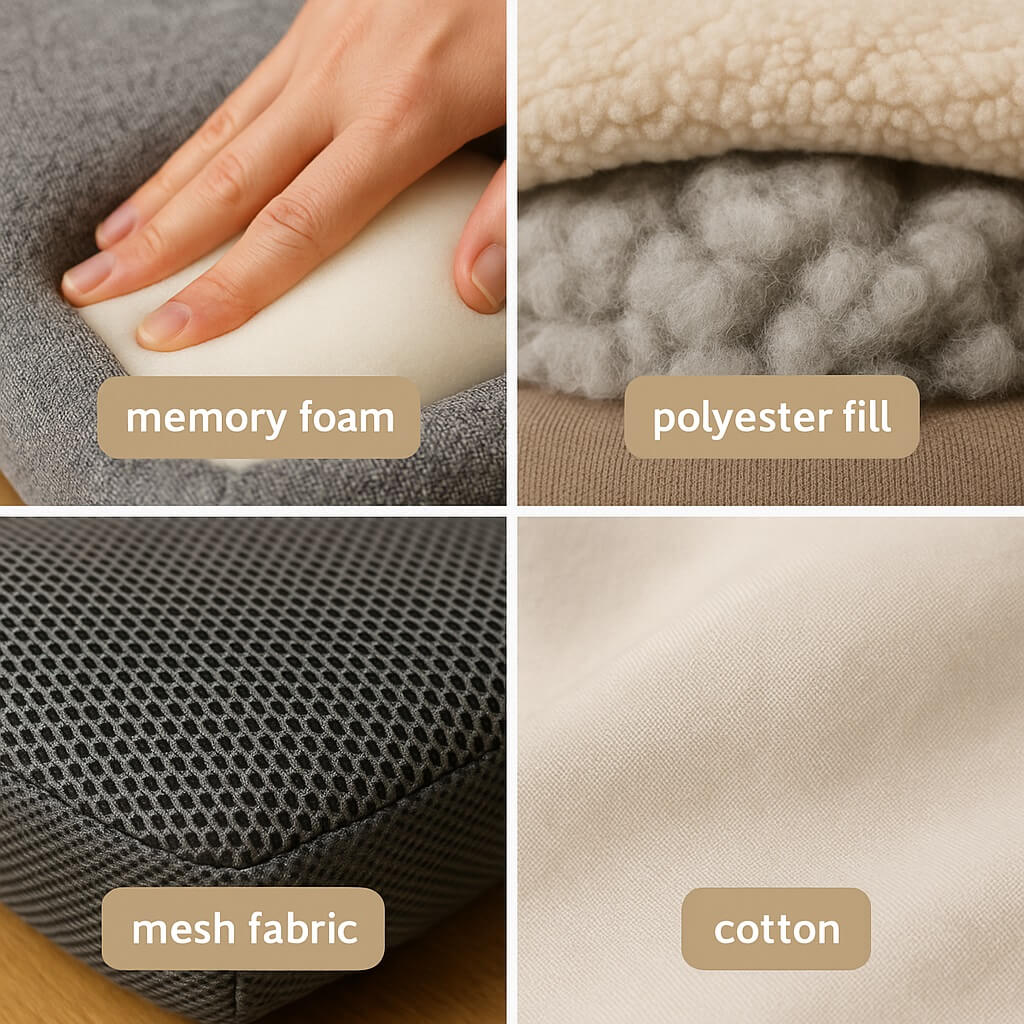
4. Bed Shape and Design
Each bed shape serves a purpose. Donut beds help anxious dogs feel secure. Sofa-style beds are great for head and neck support. Crate mats are perfect for kennels or travel. Cave beds are ideal for small breeds or shy dogs that enjoy hiding. Choose a shape that fits your dog’s comfort needs and complements your home decor.
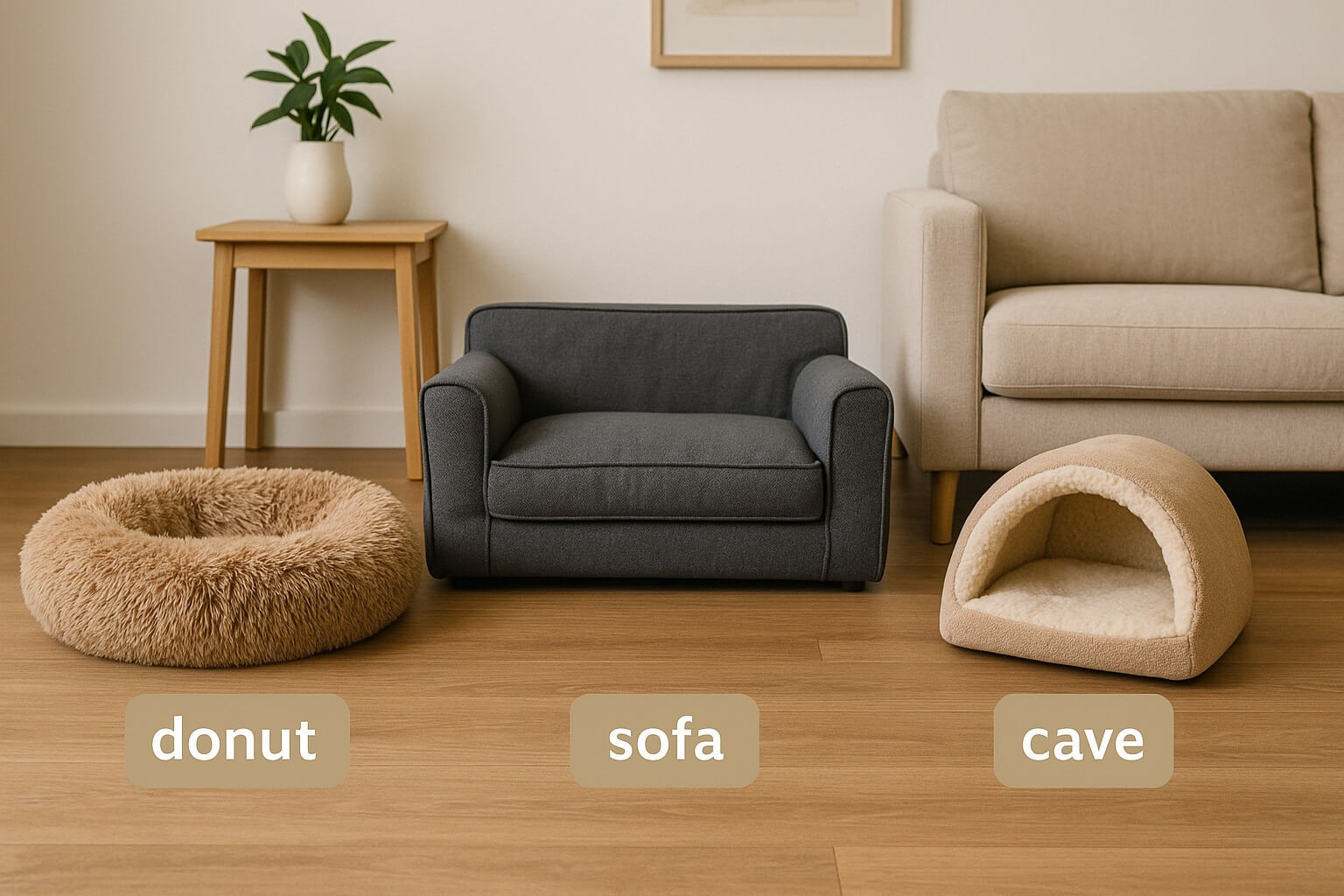
5. Location and Climate
Think about where the bed will be placed. For indoor use, choose a bed that suits your space and is easy to clean. In warmer climates, cooling gel or breathable mesh beds help prevent overheating. For colder regions, opt for thermal or self-warming beds. Outdoor beds should be elevated and weather-resistant to protect against moisture and pests.
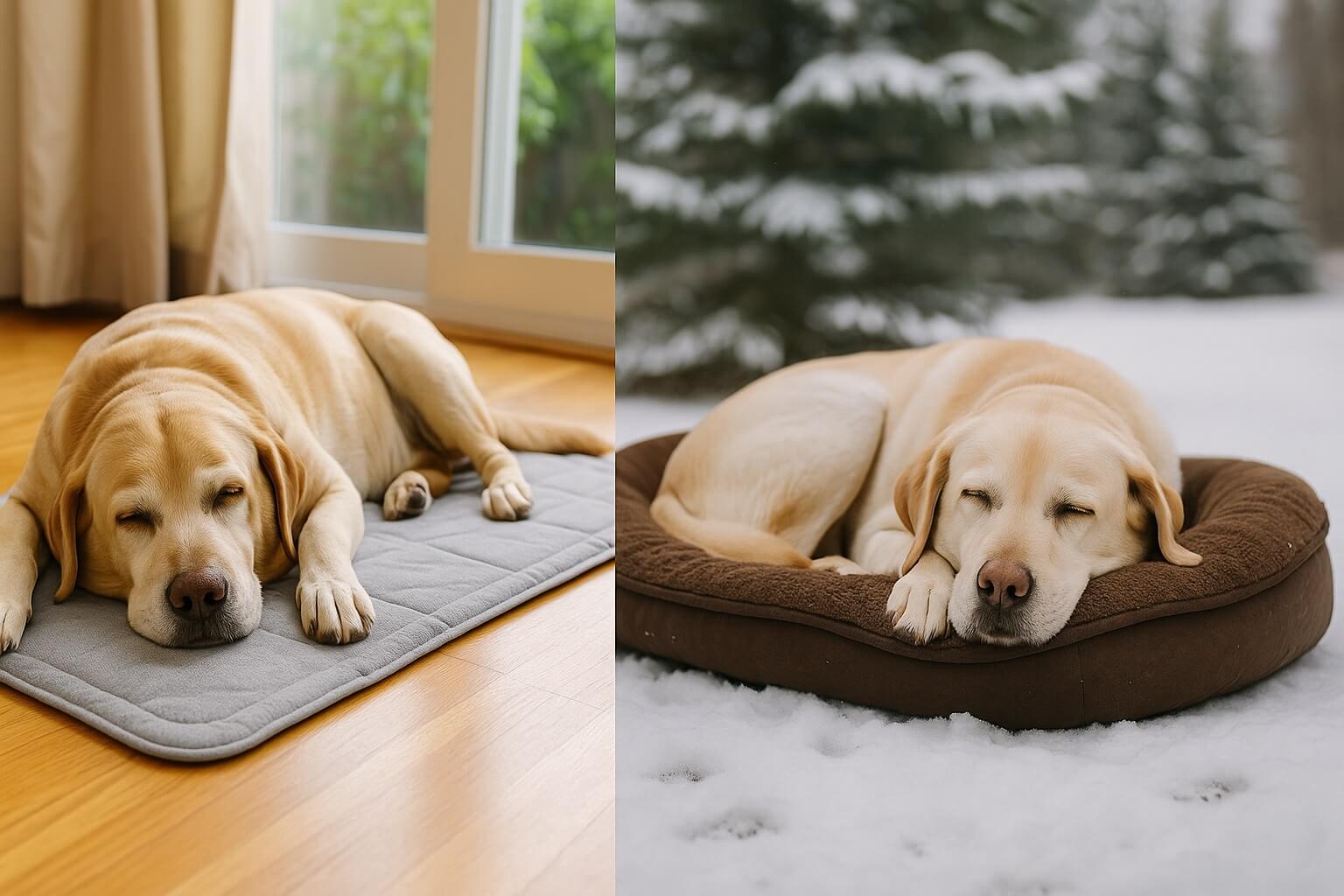
Extra Tips That Make Your Dog’s Bed Even Better
- Look for beds with removable and washable covers to keep things clean and odor-free.
- Avoid beds that slide around on smooth floors — non-slip bottoms are a plus.
- Elevated beds help keep dogs cool and are great for large breeds or outdoor use.
- Always measure your dog while sleeping to ensure the bed you choose fits their full body comfortably.
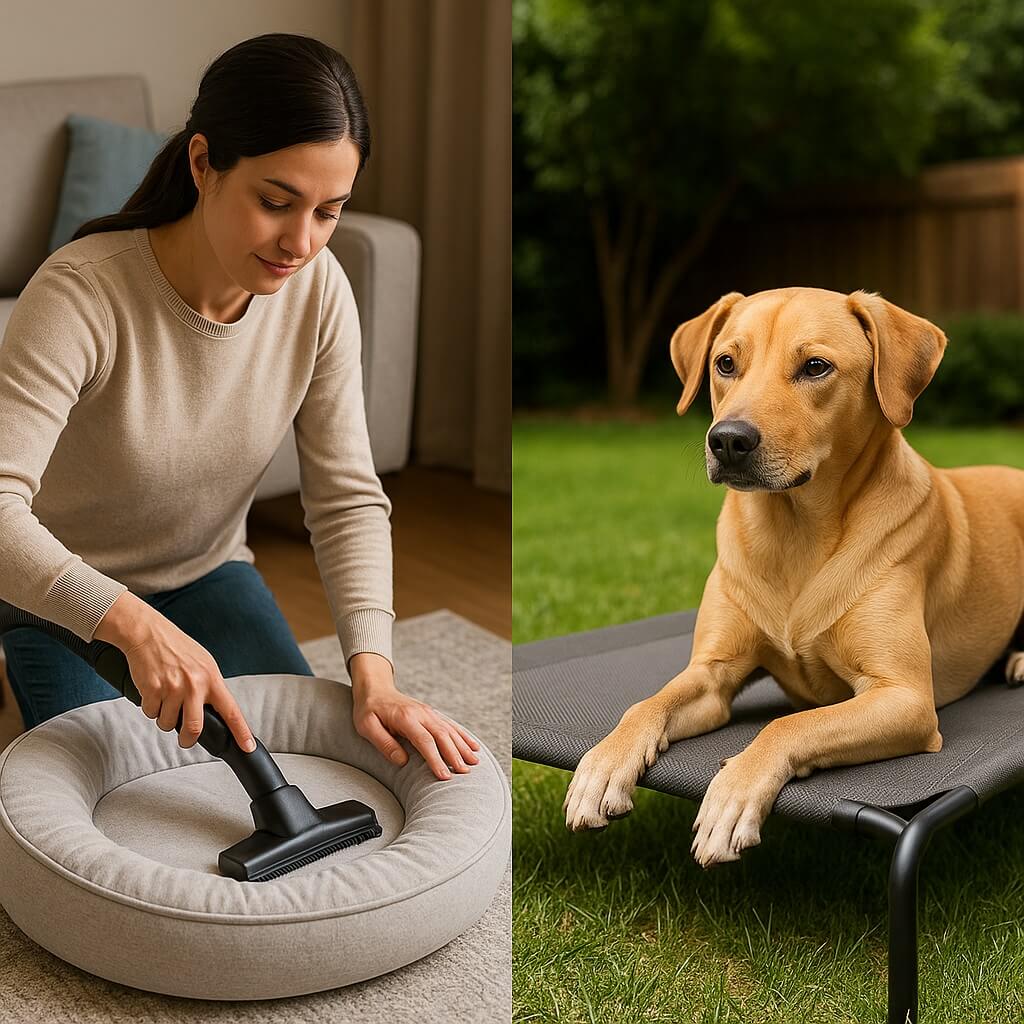

“Best nap ever!” – Every happy pup 🐾
Ready to Find the Perfect Bed for Your Dog?
Explore our handpicked list of the most comfortable, durable, and pet-approved dog beds available on Amazon.
🛏️ View Top 7 Dog Beds NowFrequently Asked Questions About Dog Beds
What type of bed is best for senior dogs?
Orthopedic beds with memory foam are ideal for senior dogs. They provide better joint support and help reduce stiffness and pain from arthritis or hip dysplasia.
How often should I replace my dog’s bed?
On average, replace your dog’s bed every 1–2 years, or sooner if it becomes worn out, loses support, or develops odors or stains that can’t be removed.
Are elevated beds better for large breeds?
Yes. Elevated beds promote airflow, keep dogs cooler in warm weather, and reduce pressure on joints — especially beneficial for large or heavy breeds.
Affiliate Disclaimer: This article contains affiliate links. If you click on these links and make a purchase, we may earn a small commission at no extra cost to you. This helps support our content and recommendations.
Image Notice: Some images used may be AI-generated, edited or enhanced for illustrative purposes. Please refer to Amazon for the most accurate and up-to-date product visuals.

